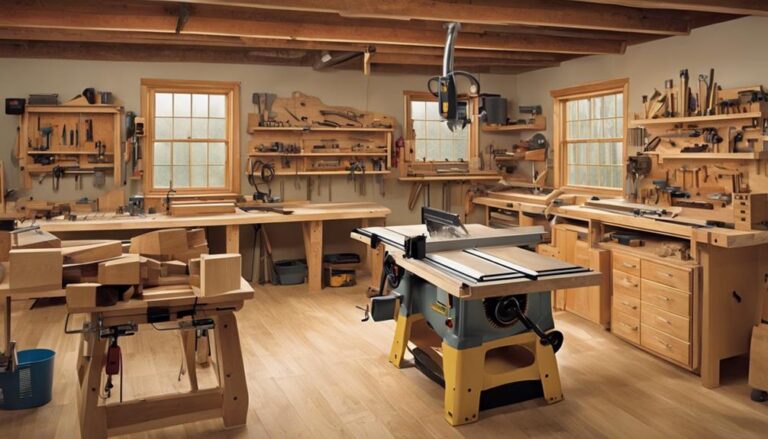In the realm of sustainable construction, eco-friendly wood is the keystone that supports the bridge between modern building demands and environmental stewardship.
As you navigate the choices of materials for your green projects, it’s crucial to consider the long-term impacts on the planet.
From the benefits of sourcing sustainable timber to the innovative uses of reclaimed wood and engineered products, each option offers a unique footprint on the Earth’s canvas. But how do you discern which material aligns best with your project’s environmental goals while also meeting practical requirements?
Contents
Key Takeaways
- Eco-friendly wood supports environmental preservation and sustainable living through responsible forest management.
- Reclaimed and recycled wood contribute to a circular economy, reducing deforestation and carbon emissions.
- Bamboo offers a highly sustainable choice due to its rapid growth, strength, and carbon sequestration capabilities.
- Sourcing challenges require a thorough understanding of market dynamics to ensure quality and consistency in eco-conscious construction.
Benefits of Eco-Friendly Wood

Choosing eco-friendly wood significantly contributes to environmental preservation and sustainable living by reducing deforestation and promoting responsible forest management.
When you opt for sustainable wood materials, such as sustainably sourced timber, you’re not just selecting a product; you’re supporting a movement towards lower carbon emissions and a healthier indoor environment.
Sustainable wood, characterized by its durability and strength, doesn’t compromise on aesthetic appeal while ensuring a lower environmental impact throughout its lifecycle. By prioritizing eco-friendly wood for your projects, you align with sustainability goals, drastically reduce waste, and aid in the preservation of vital natural resources.
This conscious choice ensures you’re part of a solution that values the planet’s health, ensuring a greener future with every purchase.
Reclaimed and Recycled Wood

You’ll find that using reclaimed and recycled wood in your green projects offers significant sustainability benefits. This includes reducing deforestation and carbon emissions, as well as contributing to a circular economy.
However, sourcing these materials can present challenges. This can include availability and ensuring the quality meets your project’s needs. Despite these hurdles, the unique character and cost-effectiveness of reclaimed wood make it a compelling choice for eco-conscious construction.
Sustainability Benefits
Opting for reclaimed and recycled wood not only breathes new life into old materials but also significantly diminishes the environmental footprint of construction projects.
By repurposing wood from sources like barns and factories, you’re directly contributing to reducing deforestation and the demand for new timber harvesting.
This sustainable sourcing aligns with the principles of the circular economy, turning waste into wealth and minimizing environmental impact.
Moreover, reclaimed and recycled wood boasts higher durability and strength compared to new wood, thanks to its aged nature. This aspect ensures your eco-friendly projects not only stand the test of time but also carry a unique character and history.
Ultimately, choosing these materials promotes sustainability and supports eco-conscious building practices.
Sourcing Challenges
Navigating the sourcing challenges of reclaimed and recycled wood requires a deep understanding of the market’s dynamics, including the hurdles of availability, quality, and consistency. When you choose reclaimed wood, you’re actively reducing the demand for virgin timber by up to 50%.
This choice not only supports virgin timber demand reduction but also contributes to significant construction waste diversion from landfills, highlighting your commitment to eco-conscious building practices.
However, you’ll face availability challenges, quality concerns, and consistency issues, making it crucial to engage in responsible sourcing practices. By opting for materials with sustainable forestry certifications, you ensure the wood’s origin aligns with high environmental standards. Additionally, utilizing recycled wood can offer material cost savings of up to 15% compared to new timber, making it not only an environmentally sound choice but also a cost-effective one.
Bamboo: A Sustainable Choice

You’ve likely heard of bamboo’s remarkable growth rate, but it’s also a versatile building material that’s making waves in green construction.
Its ability to grow up to 35 inches in a day and reach maturity in just 3-5 years positions it as a highly sustainable option.
Moreover, bamboo’s strength and durability, paired with its lightweight and water-resistant properties, make it an excellent choice for eco-conscious projects.
Rapid Growth Rate
Bamboo surges ahead as a sustainable choice for construction, growing up to 36 inches in just 24 hours, making it an efficient and renewable resource for eco-friendly projects. Its rapid growth rate enables bamboo to be harvested within 3-5 years, far sooner than traditional trees which can take decades.
This quick turnaround, coupled with a high yield per acre, positions bamboo as a resource-efficient option among eco-friendly building materials. Its resilience and strength further cement its role in various construction applications, from flooring to structural components.
Bamboo’s renewability and versatility are increasingly sought after in green projects, as they offer a durable, sustainable alternative to conventional wood. This makes bamboo an ideal candidate for your eco-conscious construction endeavors.
Versatile Building Material
Building on its rapid growth and sustainability, bamboo also stands out for its versatility as a construction material.
Bamboo’s tensile strength surpasses that of steel, making it a reliable choice for structural needs. Its lightweight nature ensures ease of transport and flexibility in design, allowing for innovative construction solutions.
Moreover, bamboo plays a crucial role in carbon sequestration, actively reducing greenhouse gases and combating climate change. This renewable resource not only offers exceptional durability but also adds aesthetic appeal to any project. As a sustainable option, bamboo is revolutionizing the construction industry, embodying a perfect blend of strength, versatility, and environmental responsibility.
Opting for bamboo in your next project isn’t just a choice; it’s a commitment to a greener future.
Innovations in Engineered Wood

Innovations in engineered wood are revolutionizing the construction industry, offering sustainable solutions that significantly reduce the reliance on virgin timber. Engineered wood products can substitute up to 70% of traditional materials, showcasing their potential to transform sustainable building practices. The manufacturing process optimizes wood fibers for enhanced structural performance and durability, ensuring your green projects stand the test of time.
- Efficient Use of Resources: The manufacturing process of engineered wood maximizes the use of wood fibers, reducing waste and environmental impact.
- Durability and Performance: Improved structural performance over traditional wood, contributing to longer-lasting construction.
- Eco-Friendly Alternative: A sustainable choice that helps reduce deforestation and promotes environmentally friendly building practices.
These innovations are steering the industry towards a more sustainable future, one project at a time.
Sourcing Sustainable Wood

Exploring sustainable wood sourcing is a crucial step in ensuring that your green project supports healthy ecosystems and promotes responsible forest management. By prioritizing materials like bamboo, cork, or reclaimed wood, you’re not only fighting against illegal logging but also championing the conservation of our natural resources. Remember, opting for sustainable options doesn’t just benefit the planet; it supports local economies and reduces carbon footprints through local sourcing.
| Material | Benefits | Emotion Evoked |
|---|---|---|
| Bamboo | Fast-growing, renewable | Hope |
| Cork | Biodegradable, recyclable | Inspiration |
| Reclaimed Wood | Reduces deforestation | Relief |
| FSC-certified Wood | Ensures responsible forestry | Trust |
| Locally Sourced Wood | Reduces emissions, supports local economy | Pride |
Embrace these sustainable wood-sourcing strategies to ensure your project leaves a positive mark on the world.
Eco-Friendly Wood Projects
When you embark on eco-friendly wood projects, you’re making a conscious choice to minimize environmental impact by selecting sustainable wood species and adhering to responsible forestry practices.
- Opting for sustainable wood species like bamboo, cypress, and teak not only supports rapid growth and renewability but also champions environmental sustainability.
- Choosing locally sourced wood significantly cuts down on carbon emissions, making your project not just eco-friendly but also community-supportive.
- Incorporating engineered wood panels offers a sustainable alternative, reducing the need for solid wood and encouraging responsible sourcing.
Conclusion
As you embrace eco-friendly wood for your green projects, you’re not just building structures; you’re nurturing the planet. Choosing reclaimed wood or bamboo and sourcing sustainable timber reflects your commitment to environmental stewardship.
Innovations in engineered wood further amplify your project’s eco-credentials. By integrating these materials, you’re ensuring energy efficiency, healthier living spaces, and a significant reduction in your carbon footprint.
Let’s build a greener future, one project at a time, with eco-conscious choices that make a lasting impact.






